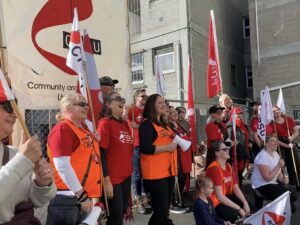
APS Signals Change
Across Australia, employers in public and private sectors alike are experiencing a recruitment and retention crisis. After years of ideologically-driven job cuts, privatisation and outsourcing to labour hire companies, the Australian Public Service (APS) is signalling a change of direction.
The APS has released new Principles of Flexible Work in the APS, and it strikes a new tone to what APS employees have been subjected to over the past decade. Its five core principles includes:
- Ensuring flexibility applies to all roles – it may require different types, but it shouldn’t just be limited to certain professions or locations.
- It should be mutually beneficial (how often does ‘flexibility’ really end up meaning ‘flexibility for the employer’?).
- Organisational and team needs will frame how individual flexibility arrangements are structured.
- Flexible work must value meaningful and regular face-to-face contact.
- Flexibility is embedded, modelled and refined.
All too often we speak to members who have been unreasonably and arbitrarily denied opportunities for flexibility, or who have experienced it being used as a cudgel by their employer to push through Flexible Working Arrangements that leave entire teams worse off.
The APS Board of Secretaries, signing off on the principles, made their position clear: “The APS wants to attract skilled and engaged people and retain the talented people who are at the core of our Service’s creativity, professionalism and success. The APS strives to be a model employer. By embedding flexibility, we have an opportunity to redefine the future of work in our Service.”
As well as supporting flexible work as “core business” moving forward, the principles also acknowledge that flexible work is key to strengthening service delivery capacity and workforce resilience by becoming an employer of choice:
“Flexibility will help transform the APS to be the best it can be, operating in a way that is fit for the times.”
All Thanks to U
Importantly, none of this has come out of the blue. Rather, it’s a direct result of years of campaigning by public sector union members from the CPSU federally, leading to the Albanese Government being elected on a platform of making our commonwealth public sector a model employer. In October, Minister for the Public Service Katy Gallagher formally requested the APSC to develop an APS-wide approach to flexibility.
>> Learn more about the Albanese Government’s APS Reform Agenda
We know all too well how changes in the public sector, for better or for worse, set the stage for the rest of our nation’s workforce. We’ve seen how public sector wage caps restrained wage outcomes for other sectors across Australia, something even the Reserve Bank of Australia now accepts.
See more: “Wages growth edges higher, but weighed down by public sector pay freezes” (19 May 2021, ABC News)
“Many private sector employers imitate the austere pay benchmarks set by governments. They argue that if governments can’t afford any more, neither can they – especially for businesses which sell goods and services to the public sector. Finally, there is a negative macroeconomic impact on private sector wages, resulting from the reduction in consumer spending that flows from suppressed pay.”
- Economists Alison Pennington and Jim Stanford from the Australia Institute (“Public Sector Wage Caps Push Wages in Agreements to 30-Year Low”)
Just as it has done for wages, State and Federal Government policies aimed at gutting job security and flexible work across our public sector have been eagerly mimicked across the labour market, as was the case with the Morrison Government’s push to get workers back into workplaces in the midst of the COVID-19 pandemic.
But so too can the tide turn in the opposite direction. Governments, whether State, Territory or Federal, have the power to be “Model Employers” for the 15% of Australians who work in the public sector. This puts pressure on employers across the private sector to up their game, or face the very tangible risk to their bottom line of workers leaving for a role in the public service.
The Albanese Government, along with the ACT Government and newly elected Minns Government in NSW, have all explicitly set the intention of being a model public sector employer.
With as many as 1 in 3 Australian workers considering a career change, it’s time for the Rockliff Government to up their game, or face the consequences.








